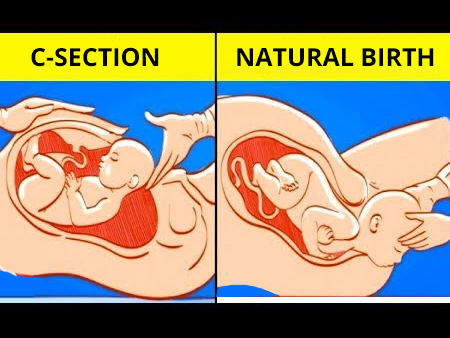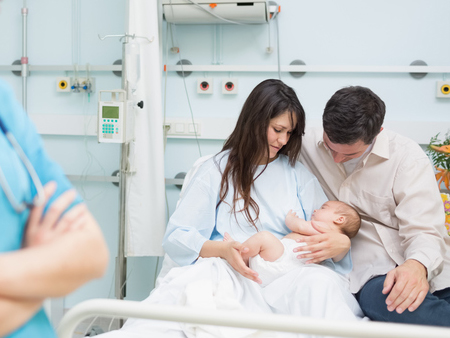Services We offer
- Caesarean Section
- Laparoscopic Surgery
- Laparoscopic Surgery in Infertility
- Hysteroscopic Surgery
- Infertility
- Laparoscopic Creation of Neovagina
- High Risk Pregnancy
- Laparoscopic Tubal Recanalization
- Hysterectomy
- Myomectomy
- Endometriosis
- Diagnostic Laparoscopy
- Urogynaecology
- Vaginal Surgery
- Caesarean Delivery
- Tubal Block Surgery
- Bad Obstetric History(BOH)
- Normal Delivery

Normal Delivery
Painless Normal Delivery Specialist in Newtown Kolkata
What is normal delivery process?
A vaginal delivery is when a person gives birth through their vagina. It’s the most common method of childbirth. During a vaginal birth, your uterus contracts to thin and open your cervix and push your baby out through your vagina (or birth canal).
What are the 3 types of delivery?
Vaginal delivery, C-section, VBAC and assisted vaginal delivery are examples of types of delivery.
Overview
• Vaginal delivery.
• Assisted vaginal delivery (vacuum or forceps).
• C-section (Cesarean birth).
• VBAC (vaginal birth after cesarean).

How do doctors do normal delivery?
YThe physician making episiotomy (a cut to widen the opening of the vagina) Continuous pushing by the mother to expel the baby out. The baby’s head comes out first, then the shoulders, and then the butt. Cutting the umbilical cord as a final step after the baby is completely out and has the first cry.
What is normal delivery time? Is normal delivery good for baby?
As per the painless normal delivery specialist in Newtown Kolkata a major benefit when it comes to vaginal birth is that the child is exposed to what is known as “beneficial bacteria” in their mother’s birth canal. As the baby moves through the birth canal, fluid passes through the baby’s nose and mouth, making its way into the digestive system.
In a first pregnancy, labor usually lasts 12 to 18 hours on average; subsequent labors are often shorter, averaging 6 to 8 hours.

Types of Childbirth: Vaginal Delivery, Water Birth and more
• Vaginal Delivery. When a baby is delivered via the birth canal of the womb, the delivery is termed as vaginal delivery or natural birth
• Caesarean Section (C-section).
• Assisted Vaginal Delivery.
• Water delivery.
• Lamaze Technique.
• Bradley Method.
• Hypnosis.
Which birth is more painful?
Ultimately, a natural birth may be more painful than a cesarean section. However, the pain after your cesarean section combined with the heightened risks to you and your baby may outweigh the initial pain of childbirth. Make sure you consult with your doctors to get the best possible advice for you.

Is it 9 months of pregnancy or 10?
Pregnancy is counted from the first day of your last menstrual period. This means an extra 2 weeks are counted at the beginning of your pregnancy when you aren’t actually pregnant. So pregnancy lasts 10 months (40 weeks)—not 9 months—because of these extra weeks.
Which week is best for normal delivery?
If there are problems with your pregnancy or your baby’s health, you may need to have your baby early. But if you have a choice and you’re planning to schedule your baby’s birth, wait until at least 39 weeks.
Benefits of vaginal delivery
Mother – Its for the mother include :
• Avoiding surgery and resulting quicker recovery time and shorter hospital admission
• Quicker onset of lactation.
• Decreased complications in future pregnancies, including placenta previa
Infant – Its for the infant include :
• Develop microbiota from exposure to the bacteria from the mother’s vagina, while the microbiota of babies born by caesarean section have more bacteria associated with hospital environments
• Decreased infant respiratory conditions, including infant respiratory distress syndrome, transient tachypnea of the newborn, and respiratory-related NICU admissions.Improved immune function, possibly due to the infant’s exposure to normal vaginal and gut bacteria during vaginal birth.
Types of vaginal delivery
Different types of vaginal deliveries have different terms:
• A spontaneous vaginal delivery (SVD) occurs when a pregnant woman goes into labor without the use of drugs or techniques to induce labor and delivers their baby without forceps, vacuum extraction or a cesarean section.
• An induced vaginal delivery is a delivery involving labor induction, where drugs or manual techniques are used to initiate labor.
• Vaginal delivery can be either spontaneous or induced.
• An assisted vaginal delivery (AVD) or instrumental vaginal delivery occurs when a pregnant woman requires the use of special instruments such as forceps or a vacuum extractor to deliver her baby vaginally. It is usually performed when the pregnancy does not progress during the second stage of labor. If the goal is to avoid the adverse effects of pushing that a cardiac patient may experience, it may also be performed in this case.Both spontaneous and induced vaginal delivery can be assisted. Examples of instruments to assist delivery include obstretical forcepts and vacuum extraction with a vacuum cup device.A normal vaginal delivery (NVD) is defined as any vaginal delivery, assisted or unassisted.
Is normal delivery painful?
Yes, childbirth is painful. But it’s manageable. In fact, nearly half of first-time moms (46 percent) said the pain they experienced with their first child was better than they expected.
What is Painless Normal Delivery?
Many women are curious and ask : what is painless normal delivery? Well, painless delivery is a term used in the obstetric world to refer to a type of labour experience where the mother feels little or no pain. It’s also known as pain-free delivery, drug-free childbirth, and natural childbirth.
Painless normal delivery or delivery with labor analgesia (Epidural) is a technique where very specific concentration of drug is used. Although the drug reduces the pain, it maintains the ability to push your baby out through the birth canal.
Painless delivery can be achieved using a form of regional anaesthesia that provides pain relief during natural labour. Epidural anaesthesia is administered through an injection on the lower back of the mother. The drug takes about 10-15 minutes to take effect. This is a good option for women with a lower pain bearing capacity, who would otherwise opt for a C-section.
Becoming a mother is the start of a wonderful journey. The amazing bond that you have shared with your unborn child during the nine months culminates with the arrival of your bundle of joy. However, the crossing over often involves an excruciatingly painful birthing process. First-time mothers-to-be often fear natural birth. While earlier an elective C-section was the only alternative available, modern medicine has brought about some revolutionary advancements that can help bring the pain during childbirth down to an acceptable level. Painless delivery or ‘Epidural analgesia’ is nothing but an option for normal delivery.
About painless delivery
Anyone or everyone can have painless delivery.
Like any other treatment procedure, the type of delivery depends on the medical condition of the mother. Under normal circumstance, the mother may get the choice to select from, but again it all depends on your concerned gynaecologist and health condition when the labour pain begins.
However, physicians assess your medical condition and previous history to determine your epidural ability. If the mother is carrying any underlying disease, the painless delivery may not be the right choice for her.

How is painless delivery possible?
Women who have a lower pain threshold, or those who get pregnant after their thirties, often request C-sections since they may be unable to go through labor pain. Epidural anesthesia provides these women a shot at normal delivery by reducing the pain significantly.
Who is a candidate for painless delivery?
In some cases, the OBGYN will advise the woman to choose painless childbirth. Such instances include:
• Women with a preexisting medical condition such as preeclampsia, cardiovascular disease or hypertension.
• Women who opt for vaginal birth after undergoing a cesarean delivery in the previous pregnancy.
• A previous case of prolonged or complicated labor.
Painless delivery is not suitable for women who have any of the following conditions:
• Bleeding disorders with a high risk of hematoma or spinal hemorrhage that may lead to a permanent neurological defect
• Previous surgery on the lower back
• Skin infection in the epidural area
• Blood clotting disorders
• Neurological diseases
Final Note
Many women opt for a painless delivery method rather than experience debilitating pain during labor. You can ask your OBGYN about different types of pain relief methods. Your doctor will advise you on the suitability of the procedure and make necessary recommendations so you can make an informed decision and experience minimal pain during delivery.

Pregnant Woman are advised to do often Regular Exercises of different kinds. Besides increasing the mind-body relationship, exercises are known to create endorphins – natural pain relievers. These endorphins are released in labor, making things easier for childbirth. Breathing exercises like Lamaze, belly breath and piston breathing help to ease the pain and develop strong pushing muscles, apart from exercises to build strong and healthy placenta, realign the body, improve digestion, improve respiration, and decrease heartburn, and remove tiredness, etc.